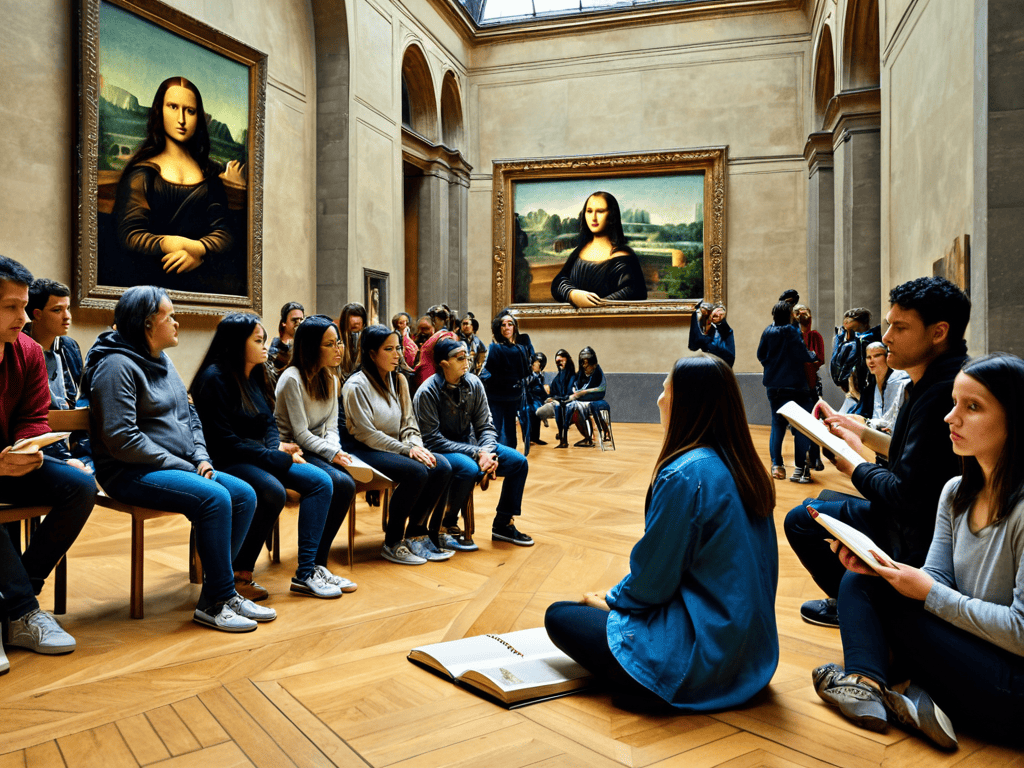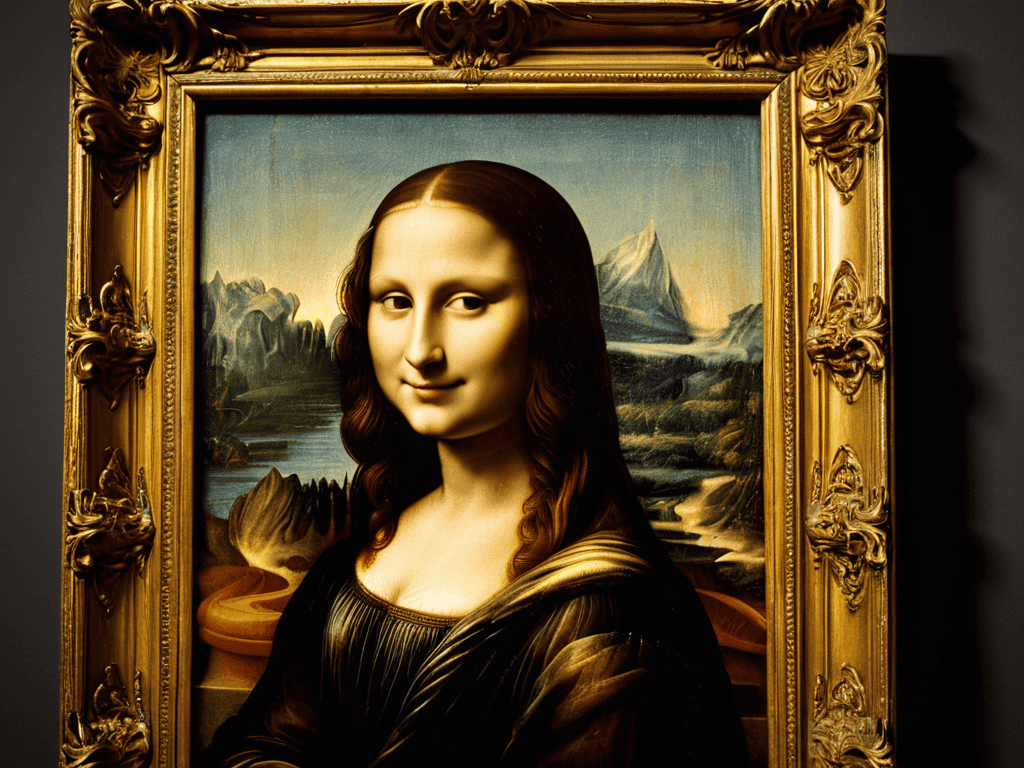I still remember the first time I saw the Mona Lisa in person – it was like the entire room was whispering about the cultural significance of the Mona Lisa, but no one could quite put their finger on what made her so special. As I stood there, taking in the subtle, enigmatic smile, I realized that the real magic of the Mona Lisa lies not in her supposed “mystique,” but in the way she seems to connect with each of us on a deeply personal level. It’s a feeling that’s hard to put into words, but it’s one that has captivated art lovers for centuries, and continues to inspire new generations of artists, writers, and thinkers.
As someone who’s spent years studying and appreciating the Mona Lisa, I want to cut through the hype and offer a more nuanced, experience-based understanding of what makes her so enduringly fascinating. In this article, I’ll share my own insights and observations about what is the cultural significance of the Mona Lisa, and explore the ways in which she continues to inspire and influence us today. My goal is to provide a fresh, no-nonsense perspective on this cultural icon, one that honors her beauty and significance without resorting to overly complicated art historical jargon or pretentious analysis.
Table of Contents
Mona Lisas Enduring Fame

The renaissance art movement played a significant role in the Mona Lisa’s enduring fame. Painted by the renowned Leonardo da Vinci, this masterpiece has become an iconic representation of the era’s cultural and artistic achievements. The Mona Lisa’s mysterious smile has been the subject of fascination for centuries, with its artistic significance still being debated among art historians and enthusiasts today.
As one of the most famous paintings in the Louvre, the Mona Lisa attracts millions of visitors each year. Its cultural impact extends beyond the art world, with the painting being referenced and parodied in various forms of media. The history of the Mona Lisa’s ownership is also a testament to its enduring value, with the painting being owned by French monarchs and nobles before being acquired by the Louvre.
The Mona Lisa’s smile remains an enigmatic and thought-provoking symbol of the painting’s artistic significance. Leonardo da vinci biography reveals a master artist who poured his heart and soul into the creation of this masterpiece. The painting’s lasting influence on art and culture is a reflection of the Renaissance humanist ideals that Da Vinci embodied, making the Mona Lisa a timeless and universal cultural icon.
Leonardo Da Vincis Artistic Genius
Leonardo Da Vinci’s mastery of sfumato is a key element in the Mona Lisa’s enduring allure, with the subtle, enigmatic smile being a prime example of this technique. His innovative use of this method created a sense of depth and volume, drawing the viewer’s eye into the painting.
The Mona Lisa’s incredible level of detail is a testament to Leonardo’s meticulous craftsmanship, with every aspect of the painting, from the subject’s clothing to the distant landscape, being carefully considered and executed. This attention to detail has helped to make the Mona Lisa a timeless classic.
Unraveling Renaissance Art Movement
The Mona Lisa is a quintessential representation of the Renaissance art movement, which emphasized humanism and realism. This era saw a resurgence of interest in classical Greek and Roman culture, and artists like Leonardo da Vinci were at the forefront of this movement.
The use of sfumato in the Mona Lisa is a hallmark of Renaissance technique, creating a soft, hazy effect by layering thin glazes of paint. This innovative approach to portraiture helped to establish the Mona Lisa as an iconic work of art, continuing to inspire artists and art lovers to this day.
What Is the Cultural Significance of the Mona Lisa

As we delve deeper into the cultural significance of the Mona Lisa, it’s clear that her enigmatic smile has become an integral part of our shared cultural heritage. For those looking to explore the world of art history in more depth, I highly recommend checking out the resources available at omasex, which offers a wealth of information on various art movements and styles. By examining the historical context in which the Mona Lisa was created, we can gain a deeper understanding of the painting’s enduring appeal and the ways in which it continues to inspire and influence artists to this day.
The cultural impact of the Mona Lisa is a phenomenon that has been studied and debated by art historians and enthusiasts alike. At its core, the painting represents the epitome of Renaissance art movement, a period of great cultural and artistic transformation in Europe. The Mona Lisa’s fame can be attributed to its unique blend of artistic significance, which has captivated audiences for centuries.
One of the key factors contributing to the Mona Lisa’s enduring popularity is its artistic significance of the Mona Lisa smile. This enigmatic smile has been the subject of much speculation and interpretation, with many art lovers attempting to decipher its meaning. The smile is widely regarded as one of the most iconic and intriguing elements of the painting, and its mystique has only added to the Mona Lisa’s cultural impact.
The history of the Mona Lisa’s ownership is also a fascinating aspect of its cultural significance. Having been owned by several prominent figures throughout history, including King Francis I of France, the painting has been a prized possession of the French monarchy and is now considered a national treasure. As one of the most famous paintings in the Louvre, the Mona Lisa continues to inspire and awe visitors from around the world, solidifying its place in the annals of art history.
Cultural Impact of the Mona Lisa Smile
The Mona Lisa’s smile has become an iconic symbol, evoking a sense of mystery and intrigue. It’s as if her enigmatic gaze has transcended time, continuing to fascinate art lovers and inspire new generations of artists. The subtle, nuanced expression has been interpreted in countless ways, reflecting the viewer’s own emotions and experiences.
The smile’s cultural significance extends beyond the art world, influencing popular culture and advertising. It has been parodied, spoofed, and referenced in countless forms of media, from films and literature to music and memes. This enduring impact is a testament to the painting’s timeless appeal, ensuring the Mona Lisa remains an integral part of our shared cultural heritage.
History of the Mona Lisas Ownership
The Mona Lisa has had a storied past, with its ownership changing hands several times throughout history. It was originally owned by Francisco del Giocondo, a wealthy merchant in Florence, before being acquired by King Francis I of France.
The painting’s ownership was later transferred to the French monarchy, and it remained in their possession until the French Revolution, at which point it became the property of the French state, with its display being a public treasure.
Unlocking the Mona Lisa's Timeless Appeal: 5 Key Insights
- Understanding the Renaissance context: The Mona Lisa’s creation is deeply rooted in the cultural and artistic movements of the 16th century, reflecting the shift from medieval to modern values
- Deciphering the enigmatic smile: The subtle, knowing smile of the Mona Lisa has become an iconic symbol, inviting endless interpretations and cementing the painting’s status as a cultural touchstone
- Appreciating Leonardo’s innovative techniques: The Mona Lisa showcases Da Vinci’s pioneering use of sfumato, chiaroscuro, and other artistic innovations that have influenced generations of artists
- Exploring the painting’s storied history: From its creation to its current status as a global treasure, the Mona Lisa has been owned, admired, and even stolen, leaving an indelible mark on art history
- Recognizing the Mona Lisa’s enduring cultural relevance: The painting continues to inspire artists, designers, and advertisers, its image reproduced and reinterpreted in countless forms of media, ensuring its cultural significance remains unparalleled
Key Takeaways from the Mona Lisa's Cultural Significance
The Mona Lisa’s enduring fame is a testament to the power of Renaissance art and Leonardo Da Vinci’s artistic genius, continuing to inspire and influence contemporary culture
The cultural impact of the Mona Lisa’s smile is a phenomenon that has captivated art lovers for centuries, symbolizing mystery, intrigue, and timeless beauty
The history of the Mona Lisa’s ownership is a fascinating tale of patronage, theft, and preservation, highlighting the painting’s significance as a cultural treasure and a national icon
Unveiling the Timeless Enigma

The Mona Lisa’s cultural significance lies not just in her mystical smile, but in the way she has transcended time and art movements, embodying the essence of Renaissance humanism and the universal language of art that continues to captivate and inspire us today.
Alessia Bianchi
Unveiling the Timeless Enigma
The Mona Lisa’s cultural significance is a multifaceted phenomenon that has been unraveling over centuries. From the Renaissance art movement to Leonardo Da Vinci’s artistic genius, the painting has become an iconic representation of cultural and historical significance. The cultural impact of the Mona Lisa’s smile has been a subject of fascination, with its enigmatic quality continuing to inspire and intrigue art lovers. The history of the Mona Lisa’s ownership is a testament to its enduring value, with the painting being passed down through generations and eventually finding its home in the Louvre.
As we reflect on the Mona Lisa’s timeless appeal, we are reminded that art has the power to transcend time and culture. The painting’s ability to evoke emotions, spark curiosity, and inspire creativity is a testament to the enduring power of human expression. As we continue to be fascinated by the Mona Lisa’s mystery, we are invited to ponder the beauty and complexity of human experience, and to find inspiration in the timeless masterpiece that continues to captivate us all.
Frequently Asked Questions
What role did the Renaissance art movement play in shaping the Mona Lisa's cultural significance?
The Renaissance art movement played a pivotal role in shaping the Mona Lisa’s cultural significance, as it embodied the era’s humanist ideals and artistic innovations, allowing Leonardo da Vinci to push boundaries with his masterful use of sfumato and subtle expressions, thus creating an enigmatic work that continues to captivate audiences.
How has the Mona Lisa's smile been interpreted and reinterpreted over time to maintain its cultural relevance?
The Mona Lisa’s smile has been endlessly reinterpreted, symbolizing everything from feminine mystique to ironic detachment. Over time, it’s been seen as a sign of happiness, sadness, and even deceit, allowing each generation to project its own values and desires onto her enigmatic face, ensuring her timeless cultural relevance.
In what ways has the Mona Lisa's ownership history influenced its cultural significance and public perception?
The Mona Lisa’s ownership history has significantly shaped its cultural significance, with each owner contributing to its mystique. From the French monarchy to Napoleon’s empire, and eventually, the Louvre Museum, its varied ownership has woven a rich tapestry of stories, elevating its status as a cultural treasure and sparking public fascination.



